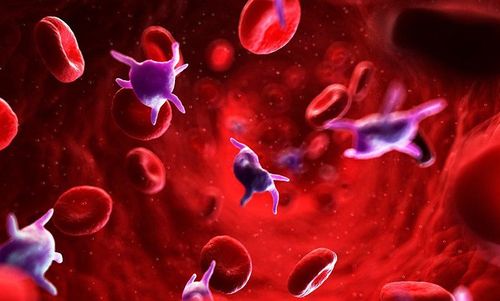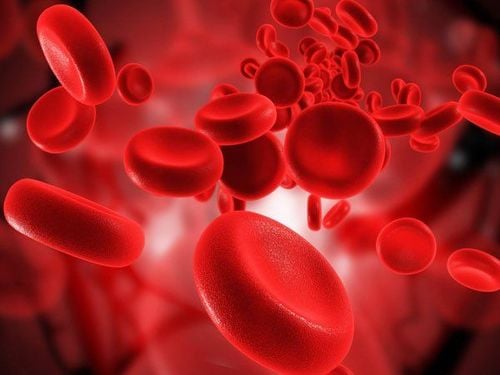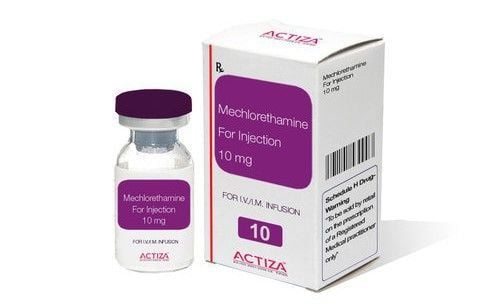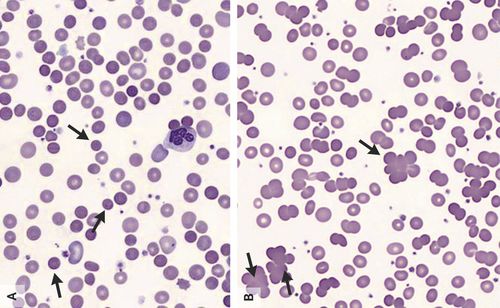This is an automatically translated article.
Primary polycythemia vera is a slow-growing form of blood cancer. The disease increases blood viscosity, blood clots and complications if not treated promptly, which will affect life.1. What is polycythemia vera?
Polycythemia vera (PV) is a rare blood cancer. The disease occurs when the bone marrow produces too many blood cells, of which red blood cells are produced the most.Polycythemia vera is a consequence of the production of too many blood cells (especially red blood cells) that increase the viscosity of the blood, which slows down the blood flow, creating favorable conditions for the formation of blood clots.
Slow blood flow reduces the body's ability to supply oxygen. Blood clots in the blood vessels increase the risk of stroke, vascular accident, atherosclerosis, arterial occlusion, etc., even causing death for the patient. Long-term disease also increases the risk of other diseases such as leukemia and some other cancers. Therefore, patients need to be treated promptly, to prevent the risk of complications.
Primary polycythemia vera cannot be completely cured, but it can be treated in time to control the condition. Patients need to adhere to treatment and follow-up appointments on time to prevent blood clots from becoming more serious.
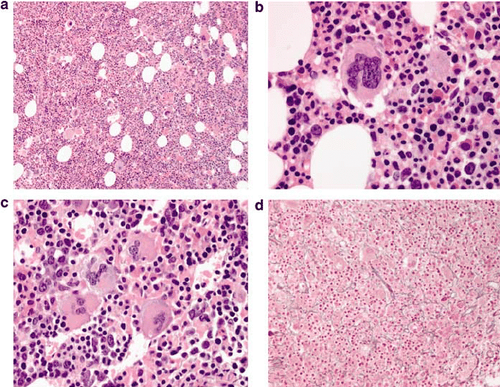
Đa hồng cầu nguyên phát (polycythemia vera – PV)
2. Symptoms of disease
Symptoms of polycythemia vera include:
Shortness of breath when lying down Dizziness Bleeding or bruising. Upper left abdominal bloating (due to splenomegaly) Headache, difficulty concentrating Itching, especially after taking a warm bath, Shortness of breath, phlebitis, pale skin, fatigue, vision problems (blurred or double vision) Unintentional weight loss Body weakness Excessive sweating As the disease progresses, serious symptoms may appear such as:
Heavy bleeding from minor injuries Bone and joint pain Red face Bleeding from the gums Burning in hands or feet

Người bệnh gặp tình trạng chóng mặt
3. Complications of the disease
Complications of polycythemia vera include:
Splenomegaly: The size of the spleen increases because it has to work harder to filter the increased amount of blood cells. Causes a number of diseases: peptic ulcer disease, inflammation of the joints (gout). Diseases of the bone marrow: Fibroblastosis, bone marrow abnormal growth syndrome, acute leukemia, etc.
4. Risk factors for disease
Factors that increase the risk of primary polycythemia vera include:
People with a history of blood clots People over 60 years of age People with a history of some specific diseases such as high blood pressure, diabetes sugar, high cholesterol. People with bad habits such as smoking, drinking alcohol, using stimulants. Women who are in pregnancy

Phụ nữ đang trong thời kỳ mang thai có nguy cơ gây bệnh
5. Diagnosis of primary rosacea
5.1 Main criteria Major diagnostic criteria for primary erythrocytosis include:
Blood count:
Hb > 185 G/L (men), > 165 G/L (women) Hb > 170 G/ L in men, > 150 G/L in women (if combined with sustained increase in Hb ≥ 20 G/L above normal but not due to iron preparation) Increase in total hematocrit > 25% normal value Test for JAK2V617F mutation: JAK2V617F mutation
5.2 Secondary criteria Secondary diagnostic criteria for primary erythrocytosis include:
Myelogram: Proliferation of 3 myeloid cell lines Serum erythropoietin test: Serum erythropoietin concentration is decreased. Bone marrow biopsy: EEC (endogenous erythroid colony) cluster appears when myeloid cell culture is not used erythropoiesis-stimulating agent. the first minor or major criterion and two minor criteria.

Chẩn đoán bệnh hồng câu nguyên phát thông qua các xét nghiệm
6. Treatment of primary erythrocytosis
General principles of treatment of polycythemia vera include:
Aggressive treatment of cardiovascular risks. Blood draw to maintain hematocrit < 0.45. Aspirin dose 75-100 mg/day, unless contraindicated. Cytotoxic drugs are prescribed based on different individual characteristics. Some specific treatment methods are applied, including:
For patients under 40 years of age, without symptoms: Perform blood draw method alone to maintain hematocrit < 0.45. For patients with a history of thrombosis or bleeding, the elderly: Treat cytopenia with hydroxyurea (starting dose 10-20 mg/kg/day, maintenance dose depends on the individual, mainly based on in peripheral blood cytology). For pregnant women, patients with hydroxyurea intolerance: Treatment with Interferon-alpha, starting dose is 3 MU/day (intramuscular or subcutaneous) until hematocrit < 0.45, maintenance dose was taken from the lowest dose that still controlled the hematocrit. For elderly patients (over 65 years old): Radiophosphorus treatment can be applied (not applicable to young patients to avoid the risk of secondary acute leukemia). In addition, patients were also treated with supportive care and prevention of thromboembolic complications due to thrombocytosis with low-dose aspirin (75mg/day) and adjunctive treatment with iron preparations for patients with repeated blood draw. iron deficiency (decreased serum iron and ferritin levels).

Sử dụng thuốc Aspirin trong điều trị bệnh hồng cầu nguyên phát
7. Measures to prevent disease progression
Lifestyle and home remedies that can help slow the progression of polycythemia vera, which include:
Exercise: Walking, jogging, etc. improves the week blood circulation to avoid blood clots. Don't smoke to reduce your risk of heart attack and stroke caused by blood clots. Take care of your skin by taking a cool bath or shower, and using a moisturizer to keep your skin healthy. Maintain a stable body temperature: Avoid exposure to extremely hot or cold temperatures that limit blood circulation such as dressing appropriately for the weather, avoiding contact with hot or cold objects, eating a lot of hot or cold foods , etc. Take care of body wounds carefully. Customers who need medical examination and treatment at Vinmec International General Hospital, can directly go to Vinmec Health system nationwide for examination or contact the hotline here for support.
MORE:
Is polycythemia vera in babies dangerous? How many red blood cells in the body? How long do red blood cells live before they die?




